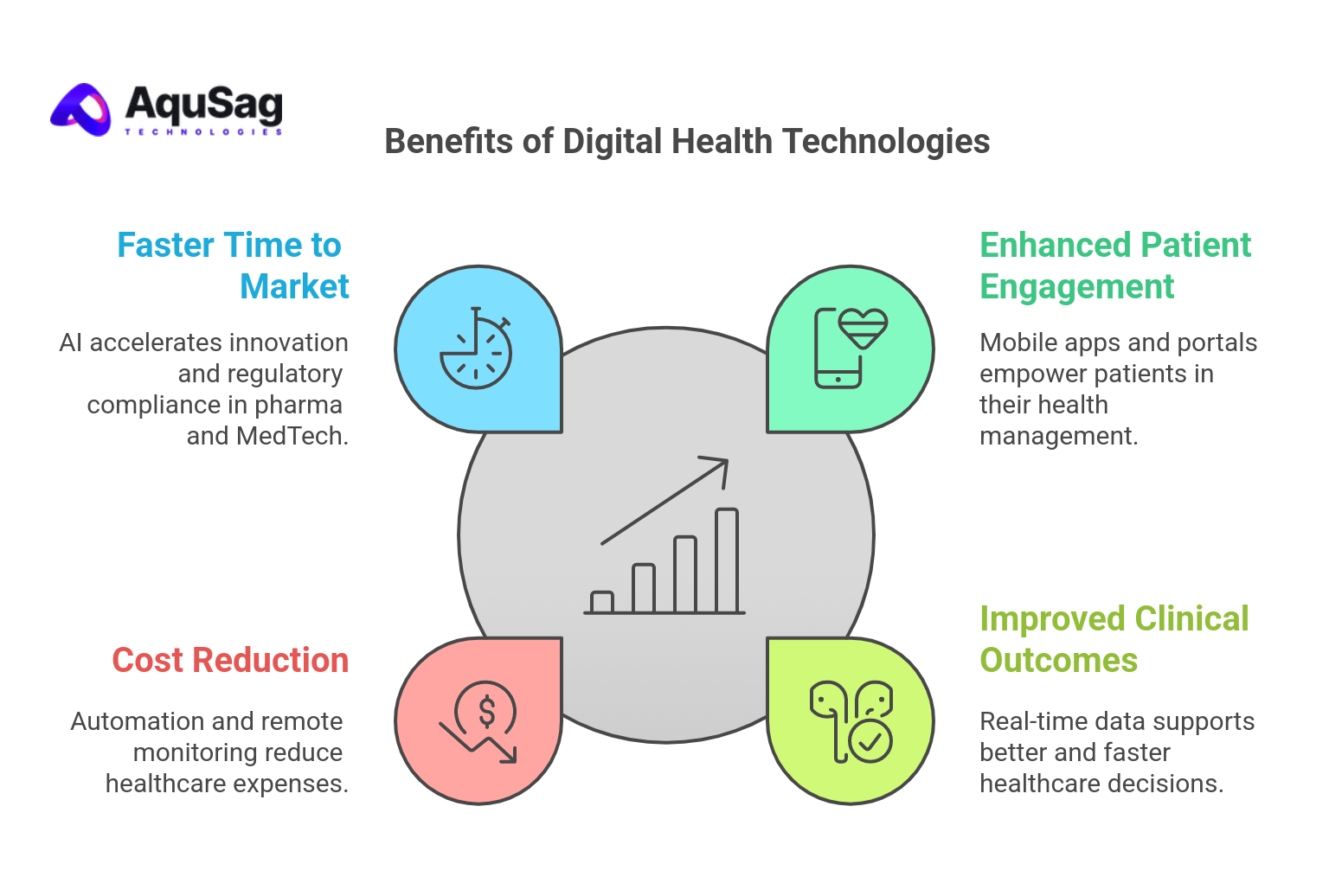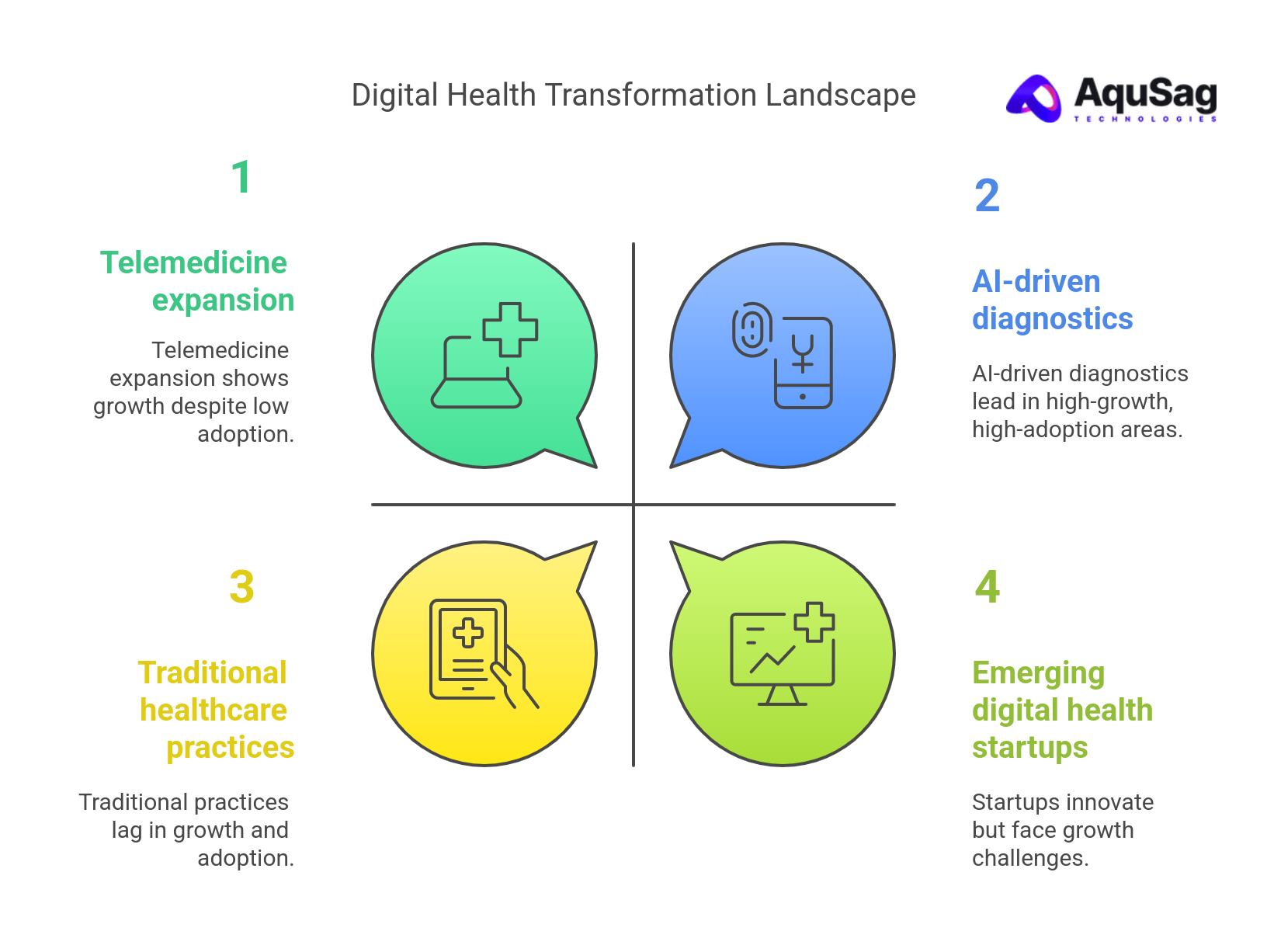 The healthcare sector is undergoing a seismic transformation driven by digital technologies, reshaping everything from patient care delivery to clinical workflows and population health management. As of 2024, the digital health market is projected to surpass $660 billion by 2025, growing at a CAGR of 23.4% since 2020 (Statista, 2023). This explosion in investment and innovation signals a clear reality: the digital health revolution is not just on the horizon—it is already redefining how care is delivered, accessed, and experienced.
The healthcare sector is undergoing a seismic transformation driven by digital technologies, reshaping everything from patient care delivery to clinical workflows and population health management. As of 2024, the digital health market is projected to surpass $660 billion by 2025, growing at a CAGR of 23.4% since 2020 (Statista, 2023). This explosion in investment and innovation signals a clear reality: the digital health revolution is not just on the horizon—it is already redefining how care is delivered, accessed, and experienced.
For decision-makers in healthcare, software, eClinical, AI/ML, and related sectors, this transformation presents both significant opportunities and complex challenges. This blog explores how cutting-edge technologies are powering this revolution, practical use cases across industries, and how businesses can partner with firms like AquSag Technologies to capitalize on the shift.
What Is the Digital Health Revolution?
The digital health revolution refers to the convergence of advanced technologies—such as AI, IoT, blockchain, cloud computing, and big data—with healthcare delivery and management. It encompasses everything from remote patient monitoring and wearable devices to virtual care platforms and AI-powered diagnostics.
At its core, digital health is about enhancing patient outcomes, improving clinical efficiency, and enabling proactive, personalized care.
Key Drivers Accelerating the Shift to Digital Health
1. Changing Patient Expectations
Today's healthcare consumers expect digital experiences comparable to those offered by banking or e-commerce. In 2023, 74% of patients preferred digital tools for scheduling appointments, accessing health records, or communicating with providers (Deloitte, 2023).
2. Regulatory and Policy Support
Governments and healthcare authorities are accelerating adoption. For instance, the EU’s European Health Data Space (EHDS) initiative, launched in 2023, aims to create a unified digital infrastructure to securely share health data across borders.
3. Rise of AI and Machine Learning
AI/ML is transforming diagnostics, treatment planning, and patient triage. According to McKinsey (2024), AI in healthcare could generate up to $360 billion in annual savings by improving operational efficiency and clinical decision-making.
4. Remote Care and Virtual Health Models
The pandemic normalized telehealth, and its adoption has remained strong. Virtual consultations now account for over 25% of all outpatient visits in the U.S. (AMA, 2024).
5. Data Interoperability and Integration
The push for interoperable health systems is fueling cloud-based solutions and blockchain adoption, enabling seamless, secure data sharing between providers, patients, payers, and devices.
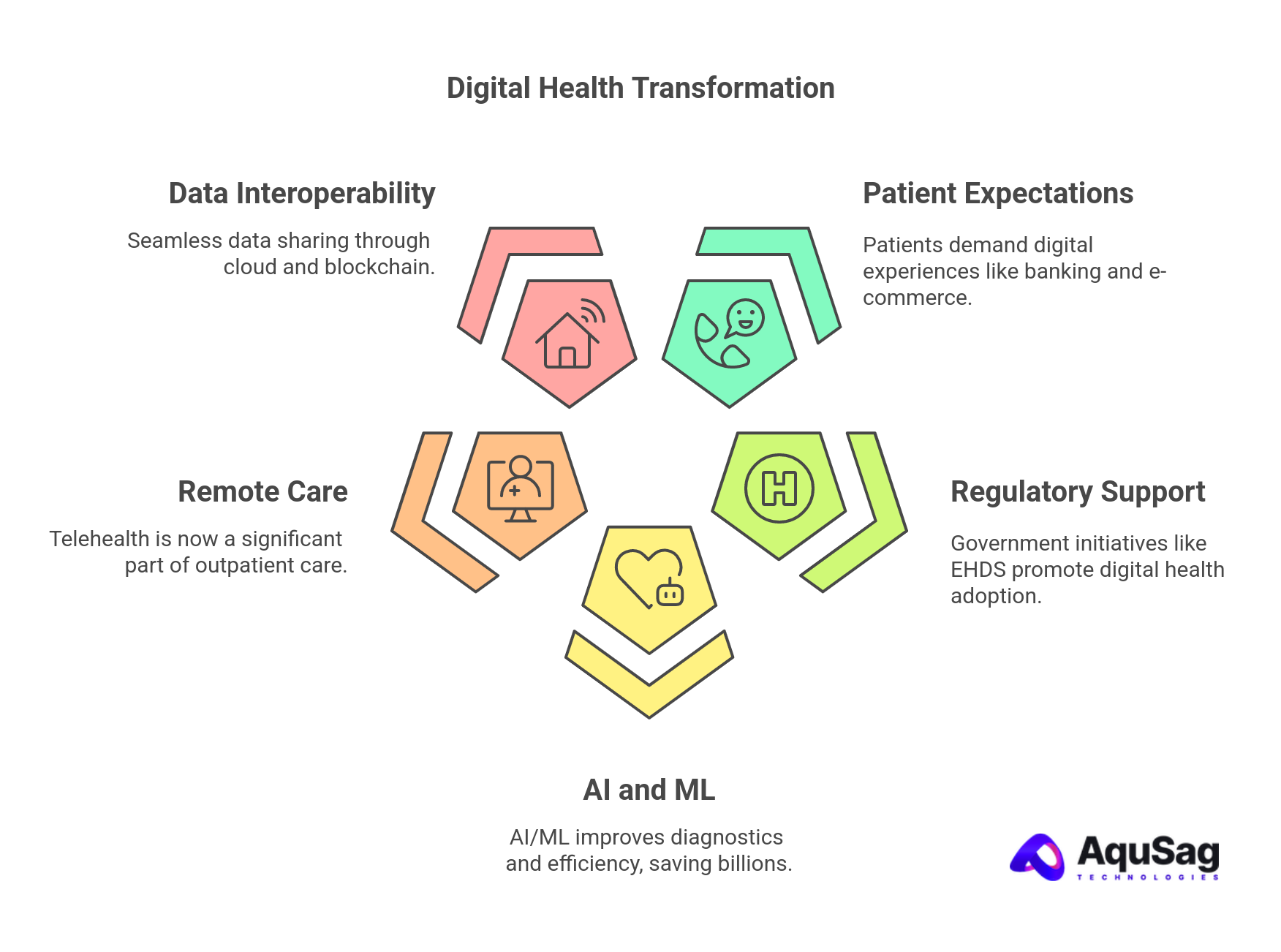
Featured Blog Post: The Future of Robotic Process Automation (RPA) in 2024: Trends and Innovations
Cutting-Edge Technologies Redefining Healthcare
Artificial Intelligence and Predictive Analytics
AI enables faster diagnoses, personalized treatment plans, and administrative automation. For instance, deep learning algorithms now detect diabetic retinopathy with 90%+ accuracy, often outperforming human specialists (JAMA Network, 2023).
Use Case: A major hospital chain in India deployed an AI-based triage system that reduced emergency room congestion by 30% and improved diagnosis-to-treatment time by 45%.
Internet of Medical Things (IoMT)
IoMT refers to connected medical devices that gather and transmit real-time health data. From smart inhalers and ECG patches to continuous glucose monitors, IoMT facilitates continuous patient monitoring and early intervention.
Blockchain for Health Data Integrity
Blockchain ensures tamper-proof health records, transparent audit trails, and secure data sharing. This is especially critical in clinical trials, insurance claims, and cross-border healthcare systems.
Use Case: A European biopharma company adopted a blockchain platform to manage consent and data traceability in clinical trials, reducing audit compliance time by 50%.
Cloud and Edge Computing
Cloud computing supports scalable, remote access to EHRs, imaging data, and analytics tools. Edge computing, meanwhile, enables real-time data processing at the device level, crucial for wearables and IoMT applications.
Natural Language Processing (NLP) in Clinical Documentation
NLP tools convert physician voice notes into structured EHR data, improving documentation accuracy and saving hours of administrative work weekly.
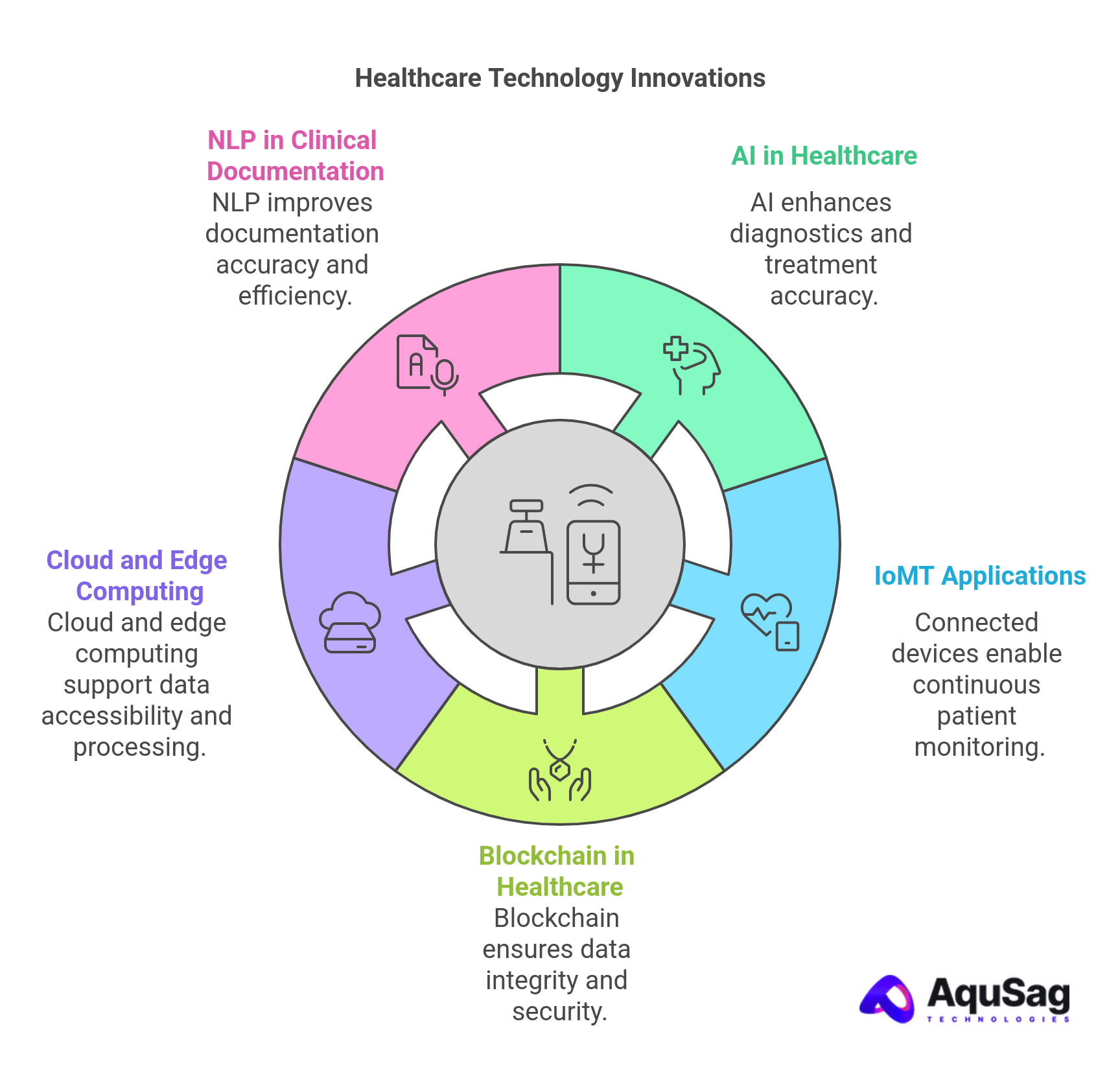 Use Cases Across Healthcare and Tech-Adjacent Industries
Use Cases Across Healthcare and Tech-Adjacent Industries
1. eClinical and Pharma
- Virtual Trials: Digital platforms for remote patient recruitment and monitoring are slashing trial costs and timelines.
- AI in Drug Discovery: ML models identify promising compounds in weeks instead of months, accelerating R&D.
2. Logistics and Healthcare Supply Chains
IoT and AI optimize cold chain monitoring for temperature-sensitive drugs and vaccines.
Blockchain ensures provenance and authenticity of critical medical supplies.
3. Enterprise Software and SaaS for Providers
Smart dashboards provide real-time views of patient flow, staffing needs, and financial metrics.
Predictive analytics forecast readmission risks and optimize resource allocation.
4. AI/ML in Diagnostics and Imaging
AI algorithms analyze radiology and pathology images with increasing accuracy.
ML-driven risk stratification enables early intervention for high-risk patients.
5. Manufacturing (MedTech and Device Production)
Smart factories producing medical devices use digital twins to simulate and optimize production.
Predictive maintenance ensures high uptime and quality in critical device manufacturing.
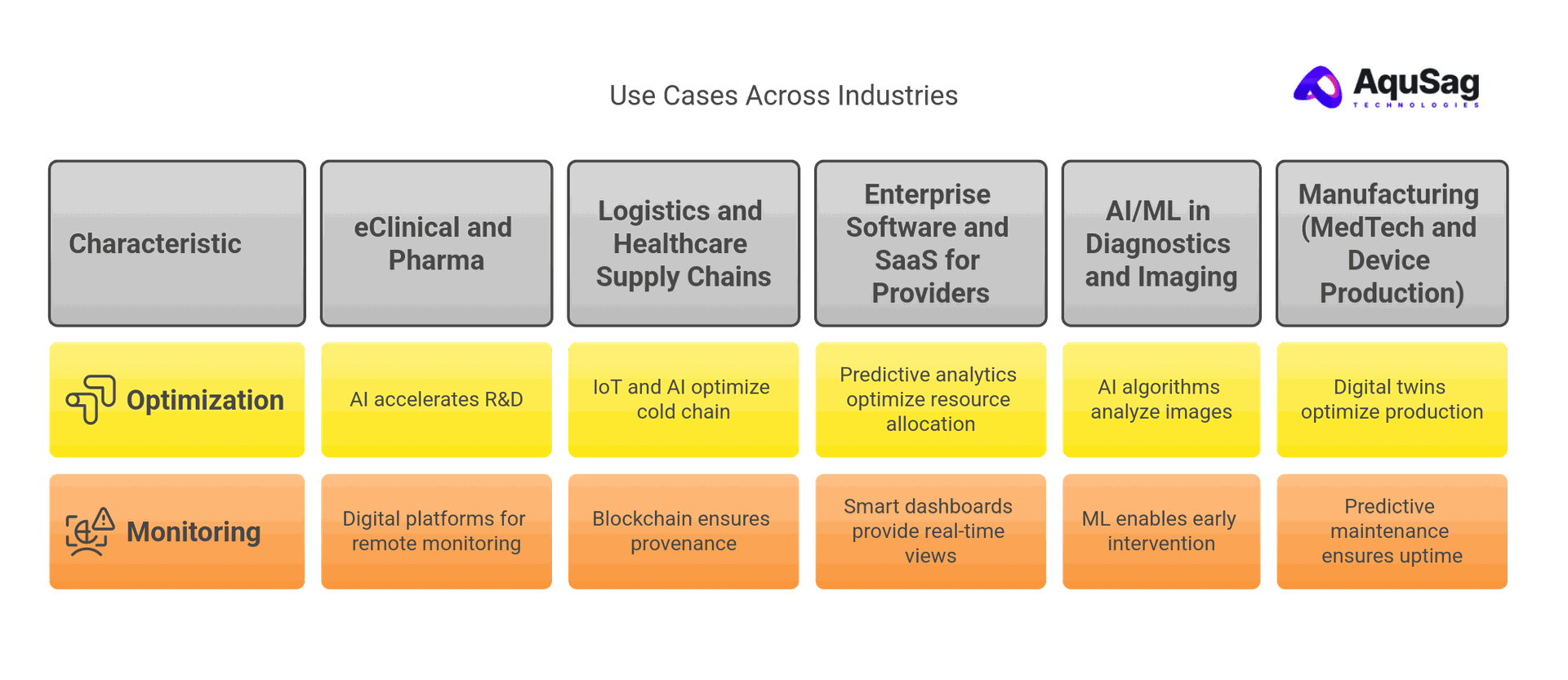 Benefits for Healthcare Organizations and Tech Innovators
Benefits for Healthcare Organizations and Tech Innovators
Digital health technologies deliver measurable improvements across clinical, operational, and financial dimensions:
- Enhanced Patient Engagement: Mobile apps and portals empower patients to take control of their health.
- Improved Clinical Outcomes: Real-time data supports evidence-based decisions and faster interventions.
- Cost Reduction: Automation and remote monitoring reduce hospital readmissions and administrative overhead.
- Faster Time to Market: In pharma and MedTech, AI shortens innovation cycles and ensures regulatory compliance.
Featured Blog Post: The Future of Natural Language Processing (NLP) in Customer Service
Overcoming Challenges in Digital Health Adoption
While the benefits are substantial, implementation hurdles remain. CTOs and innovation leaders must navigate:
- Data Privacy and Compliance: Regulations like HIPAA and GDPR require robust security measures.
- Integration Complexity: Legacy systems can be difficult to connect with modern platforms.
- Change Management: Clinicians and staff need training and support to adopt new tools.
- Vendor Alignment: Choosing the right technology partner is crucial for long-term success.
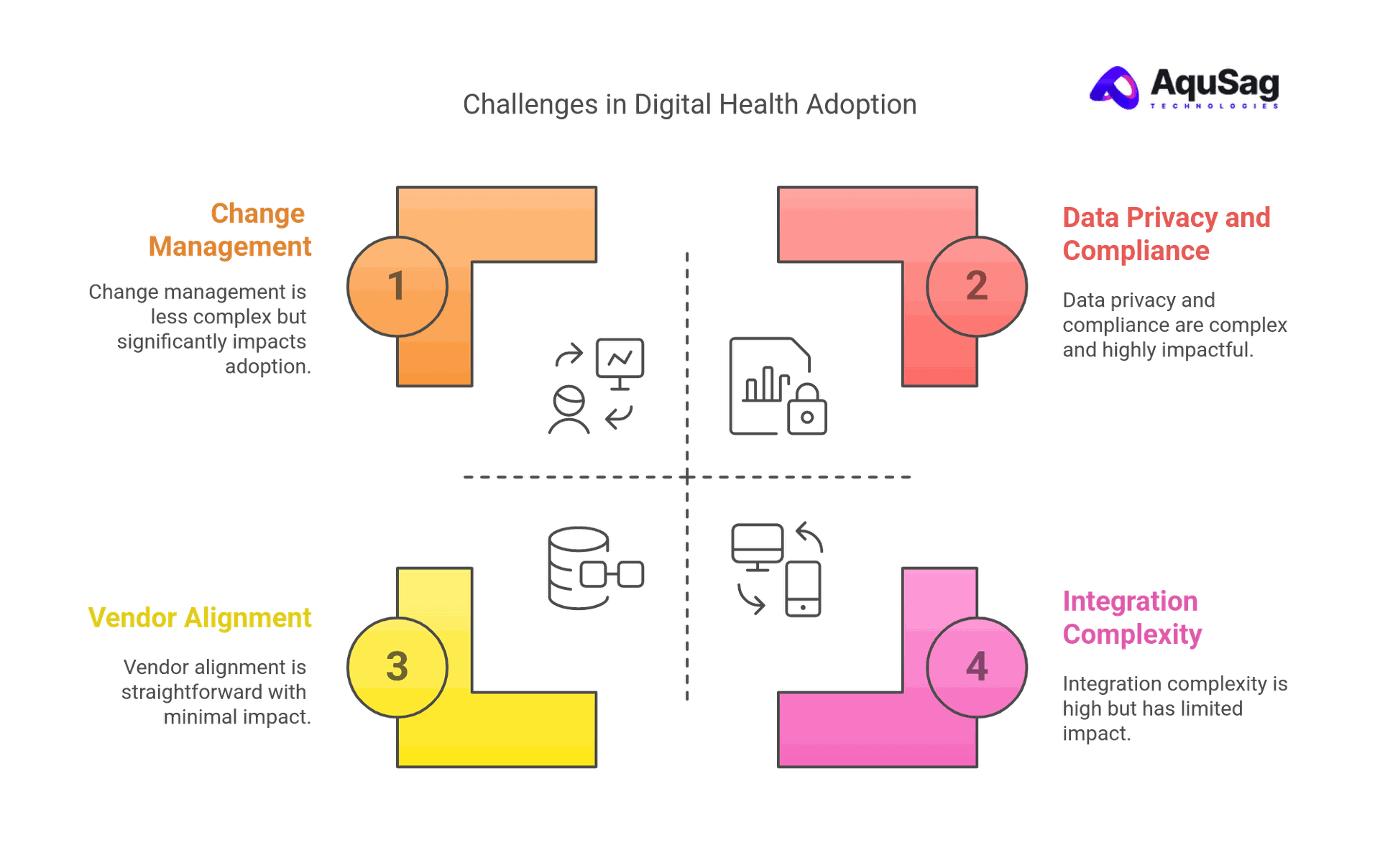 How AquSag Technologies Empowers the Digital Health Revolution
How AquSag Technologies Empowers the Digital Health Revolution
At AquSag Technologies, we specialize in building future-ready digital health solutions by providing:
- Dedicated Development Teams: Expert engineers and consultants who understand healthcare-specific challenges.
- Custom Software Development: From EHR integrations to AI-powered analytics platforms.
- Technology Consulting: Strategic insights to help you navigate regulation, innovation, and implementation.
Whether you're a healthtech startup looking to scale or a hospital system modernizing its tech stack, AquSag offers the technical depth and healthcare domain expertise to bring your vision to life.
Case Study: Scaling a Virtual Care Platform
A North American telehealth provider partnered with AquSag to redesign its legacy system. Our team built a scalable, secure, and mobile-first virtual care solution that:
- Handled a 5x increase in daily consults
- Reduced call drop rates by 60%
- Integrated seamlessly with existing EHR systems
The Road Ahead: Future Trends to Watch
1. AI-Driven Personalization
Expect hyper-personalized care plans based on genetic, behavioral, and environmental data.
2. Ambient Interfaces in Care Settings
Voice-activated and sensor-based systems will assist caregivers without interrupting workflows.
3. Virtual Reality for Therapy and Training
VR will become a staple in pain management, PTSD treatment, and surgical training.
4. Global Health Interoperability
Cross-border data sharing and collaboration will be vital in pandemic preparedness and research.
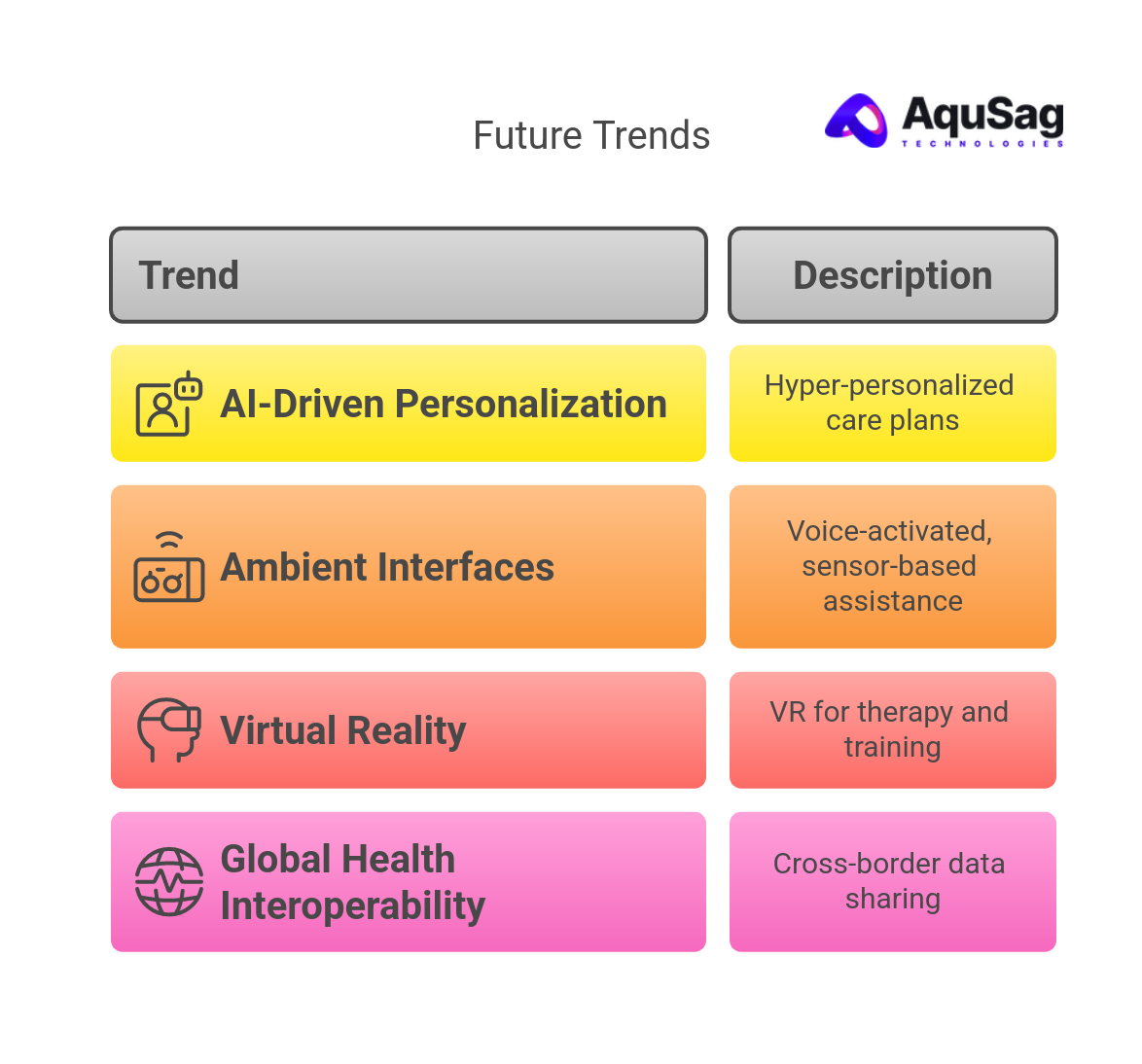 Conclusion: Partner with AquSag to Lead the Digital Health Future
Conclusion: Partner with AquSag to Lead the Digital Health Future
The digital health revolution is transforming more than just patient experiences—it is reshaping the entire healthcare ecosystem. For companies across healthcare, software, logistics, AI, and related domains, the opportunity is clear: invest in transformative digital solutions now, or risk being left behind.
AquSag Technologies stands ready to be your strategic partner in this journey. With deep expertise in healthcare technologies, agile delivery models, and a commitment to innovation, we help you:
- Launch new digital health products
- Integrate AI and IoT into existing systems
- Build scalable platforms that improve outcomes and reduce costs
Let’s build the future of healthcare together.
Contact AquSag Technologies today to discuss your digital health vision and explore how our dedicated teams can help you innovate, scale, and lead.
